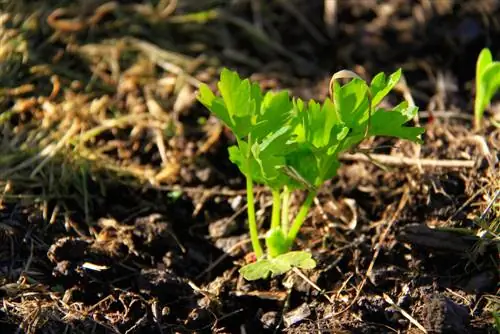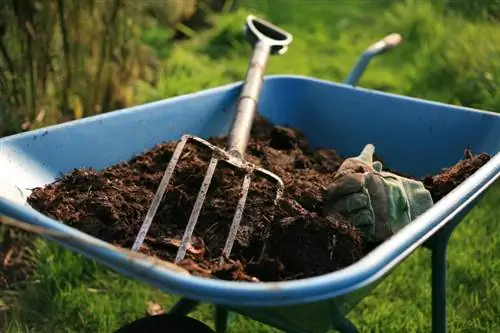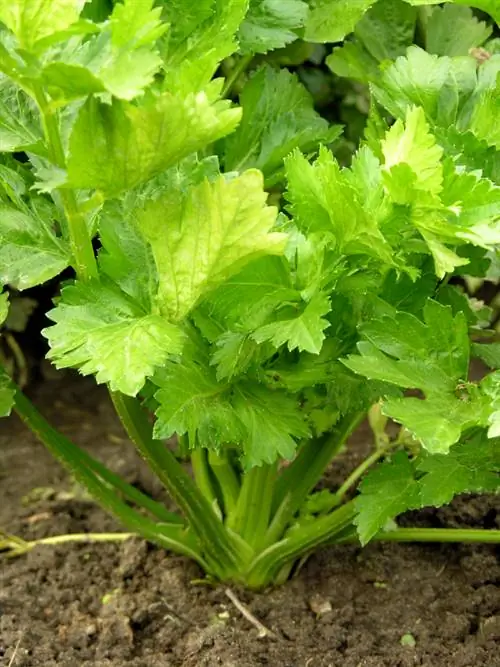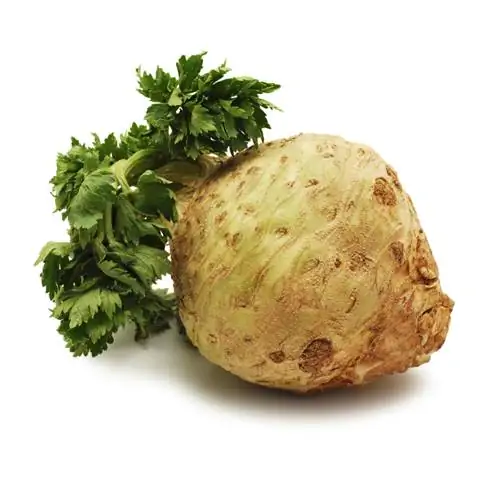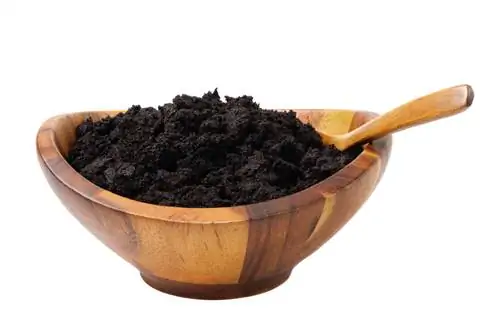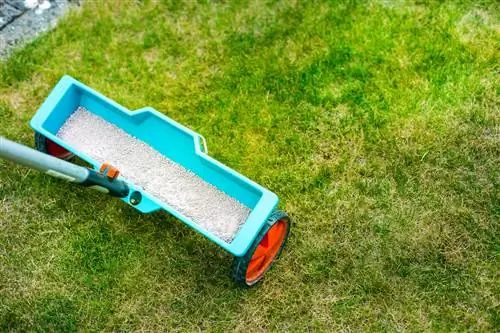- Author admin [email protected].
- Public 2023-12-16 16:46.
- Last modified 2025-01-23 11:22.
Celery is a vegetable that needs a lot of nutrients from spring until harvest in autumn. The type of nutrient supply plays a major role because the herb has special requirements during growth. The original distribution provides information.

How should you properly fertilize celery?
In order to optimally fertilize celery, you should incorporate compost and horn shavings in the spring, regularly supply it with nitrogen and potash fertilizer in the summer and distribute compost or manure in the fall. This ensures sufficient nutrient supply for he althy growth.
Claims
The wild form of celery comes from the Mediterranean region, where it thrives on moist to swampy soils and saline subsoils. In the garden, celery stalks enjoy heavy, humus-rich soil, while celeriac tends to grow in sandy, humus-rich soil. The pH value is ideally between 6.5 and 7.5. The varieties are heavy feeders and have a high need for nitrogen. The culinary herb requires phosphorus, potassium and magnesium in medium concentrations.
Spring
In order to give the Mediterranean plant an optimal start to the growing season, you should prepare the soil well. Before planting or direct sowing, work compost into the bed and sprinkle horn shavings (€32.00 on Amazon) to cover the nitrogen requirement. Alternatively, a commercially available vegetable fertilizer is suitable.
Summer
Celery grows between May and September. In mild regions the harvest extends into October. During this time, the herb attaches importance to an optimal supply of nitrogen. In order for celeriac to develop magnificent tubers, a supply of potassium s alts is necessary. You can either use normal table s alt or supply the plants with potash fertilizers:
- S alt: in July, sprinkle five to ten grams of sea s alt per square meter or occasionally water with s alt water
- Kali: administer a potassium-containing fertilizer or pure wood ash twice
- Nitrogen: pour nettle manure every ten to 14 days in a ratio of 1:10
Tip
Avoid drought and lack of nutrients, as this will cause the plant to start developing flowers prematurely. It does not form a tuber, but shoots upwards. Mulch the bed with fern leaves or comfrey.
Autumn
If you don't want to fertilize in spring, you can spread compost on the substrate in autumn. Manure from horses or chickens is also suitable for soil improvement. This gives the microorganisms enough time to release the nutrients. If you dig up the soil after winter, you will get a fine crumbly structure.

